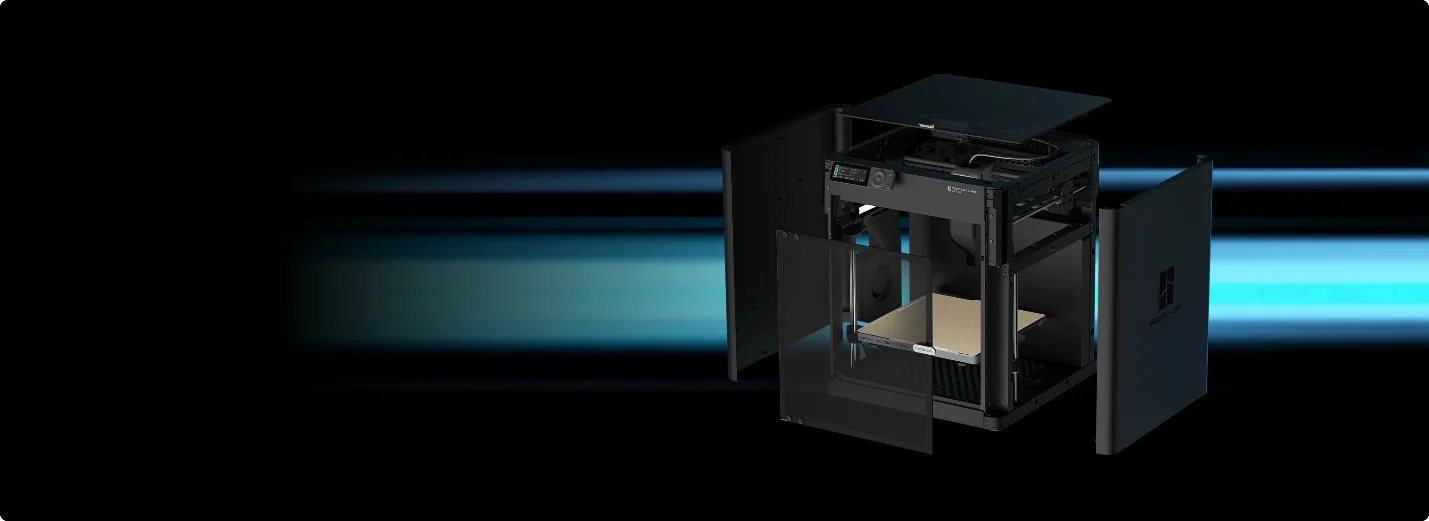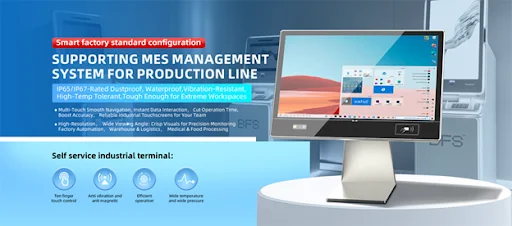A Complete Guide to Enclosed 3D Printers: How to Choose the Right Model

If you often print high-temperature materials, it is highly recommended to use an enclosed 3D printer. The protective casing around the printing area provides a controlled environment. Thus helping to prevent warping and shrinking of the filament. This guide will help you choose the right model for an enclosed 3D printer.
What Is an Enclosed 3D Printer?
An enclosed 3D printer is a type of printer that has walls surrounding the printing area. This housing has two main purposes:
- Thermal Stability
- Isolation
While printing, the open frame printer heats from the hot end, and the print bed cools. A 3D printer with an enclosure traps this heat inside the chamber. Hence, the temperature is distributed uniformly, providing you with better layer adhesion.
The print bed of an enclosed 3D printer is isolated from dust, debris, fumes, etc. This physical barrier protects your prints from bumps, pits, or rough patches.
Are Enclosed 3D Printers Worth It?
Enclosed 3D printers are quite an investment. They’re often pricier than open-frame 3D printers. Is this cost actually justified? It depends on what you plan to print and how you’ll use it. The following are some factors that can help you decide:
- If you regularly print with materials like ABS, ASA, nylon, polycarbonate, or carbon fiber composites, then an enclosure is a must.
- For someone just starting, open-frame printers are more suitable as they are comparatively easier to set upand fix.
- With children around, the hot print head of the open-frame 3D printer can be a safety risk.
Enclosed vs Open 3D Printer: What’s the Difference?
The fundamental difference between enclosed and open-frame 3D printers lies in the build area. The printing area of open-frame 3D printers is exposed. Enclosed 3D printers have walls around the printing area. Other differences are stated below:
- Print Quality: Warm and stable temperatures inside the chamber of the enclosed printer provide consistent prints.
- Material Compatibility: With open-frame 3D printers, the material options are limited. The enclosed printer provides more filament options, especially the temperature-sensitive ones.
- Noise: Enclosed printers are often quieter due to reduced airflow and fan noise exposure, though total noise depends on model and fan design.
- Accessibility: Open printers are easier to monitor while enclosed ones have visual obstructions.
- Price: The open-frame printers cost less.
Are Enclosures Good for 3D Printers?
The enclosure of 3D printers provides many technical benefits. The controlled environment significantly improves the results. Advanced printing materials have an increased risk of wrapping. Enclosures minimize this. If you print using the enclosed 3D printers, you’ll notice that the stable temperatures provide better layer adhesion. So, there are a few weaker points in your final print.
Enclosed 3D Printer with Filter: Benefits
The enclosed 3D printer with filter has an integrated air filtration system. Oftentimes, these filters are HEPA or activated carbon. This provides healthier, safer, and cleaner operation. Here are the benefits of an enclosed 3D printer with a filter:
- Some printing materials release ultrafine particles (UFPs). These can be harmful if inhaled. HEPA filters catch these, reducing the airborne exposure.
- Carbon filters eliminate the strong odors during printing.
- The enclosed filter improves indoor air quality by preventing fumes from spreading throughout the room. This is very important in schools, offices, or homes.
Who Should Consider an Enclosed 3D Printer?
Before buying an enclosed 3D printer, you should consider whether it fits your requirements. Below, we have listed some scenarios where enclosed 3D printers are highly beneficial:
- Engineers:Engineers often print precise prototypes or functional parts. These should be able to withstand mechanical stress. For reliable printing of engineering-grade filaments, enclosed printers work really well.
- Educational Institutions: In institutions, fume management is essential. They also require printing with multiple materials often. Enclosed 3D printers are versatile and also safe.
- Co-working Spaces:In offices or co-working spaces, you have to be mindful of others. Reduced noise and fume exposure is also beneficial in this scenario.
- Variable Environment: If you set up your printer in the garage or a place where the temperatures swing. From freezing winters to hot summers, the cabinet around the buildingarea buffers against these environmental challenges.
Top Enclosed 3D Printers and Brands in 2025: Bambu Lab P1S
Our recommended best enclosed 3D printer is Bambu Lab P1S. In today’s market, it is one of the best-balanced options. Here are some of its standout features:
- Auto-leveling: This printer has automatic bed leveling, which means you won’t have to deal with manual leveling. With this feature, you don’t need to worry about the first layer sticking properly. This feature alone can save you hours of frustration.
- Multi‑material: Compatible with Bambu Lab AMS, this printer can provide up to 16 colour printing. AMS unit swaps between different colours during a print.
- Beginner‑friendly setup: This printer works right out of the box. Its automated features reduce setting complexity. You won’t need to spend hours just assembling it.
- Enclosed Chamber with Filtration: This 3D printer with enclosuremaintains a stable temperature. This improves print quality.
- High-speed:With printing speed up to 500 mm/s and acceleration to 20,000 mm/s², you can print significantly faster.
If you are looking for the best enclosed 3D printer with excellent features, Bambu Lab P1S is your answer. It’s suitable for both beginners and advanced printing.
FAQs About Enclosed 3D Printers
What is a large enclosed 3D printer?
A large enclosed 3d printer usually has a build volume of 300 × 300 × 300 mm or larger. It’s not a strict standard, but it is larger as compared to the desktop models.
Is it safe to have an enclosed 3D printer in your room?
Yes, an enclosed printer with a filter is safe to use in a room. It reduces the harmful fumes.
Does the enclosure affect print quality?
Yes, an enclosed printer provides better print quality. It has several features, like temperature stability. This reduces wrapping, shrinkage, and layer separation.
Is it bad to breathe in 3D printer fumes?
Some filaments, like ABS, Nylon, release VOCs and UFPs that can irritate the respiratory system. Long-term exposure to these particles can be harmful.

Business Checking Account Options for Modern Entrepreneurs

Why Businesses Require Inspection of an LPG Tank

Cost of Private 5G and Private LTE Networks: What Should Businesses Choose

Accelerating drug discovery through the DEL-ML-CS approach

AI in Marketing Is No Longer a Buzzword — It’s the Strategy

The Brainpower Behind Visual Communication

A Complete Guide to Enclosed 3D Printers: How to Choose the Right Model

Top 10 Mods and Maps That Made CS 1.6 Unforgettable









